Family Engagement: A Win-Win for Patients and Practices
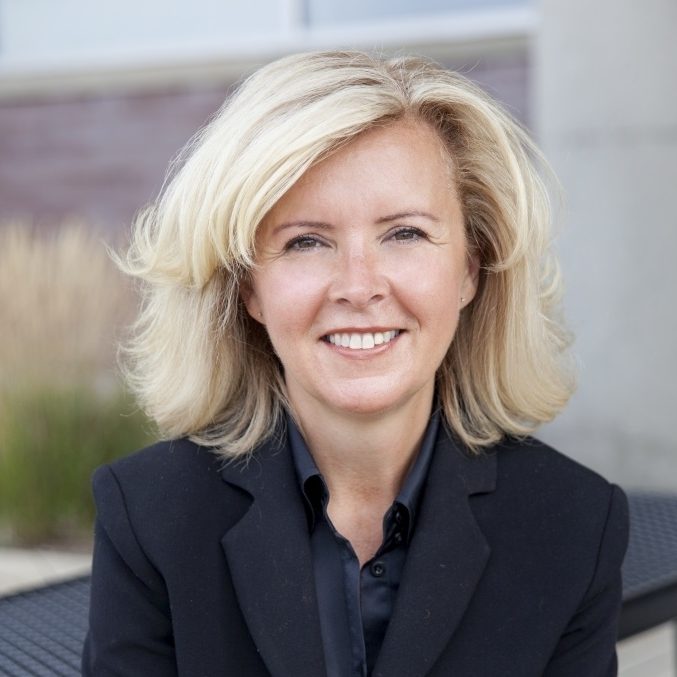
Guest Blog by: Mary Pat Hinton

It’s not surprising that family involvement is tied to patient health outcomes after surgery1. When I spoke with a renowned ophthalmologist in the summer of 2021, he noted that approximately two thirds of his practice’s patients felt it was important to consult their family before making a treatment decision. Two thirds is a significant number – something that should give all of us pause. If we can positively influence patient outcomes by involving family members, shouldn’t we be trying to find a way to make that happen?
I think surgical practices intuitively know this, but I also know that the challenge for any surgical practice is figuring out how to involve families while not increasing the time and effort to manage all of those additional relationships. So how do you do it? Spoiler alert – the answer is technology, and I’m here to talk to you about it!
Efficient family engagement is one of the key pillars of the Intellijoint CARE solution. Using patient engagement technology to engage families improves the likelihood that patients follow pre and post-surgery recommendations, while driving the efficiencies you need to scale your business.
The solution: Invite key family members to participate
I have a quick anecdote that I want to share that might help illustrate where family involvement could have been a huge time saver. Last winter, I drove a family member for day surgery. There had been significant lead up to the appointment including lab work, imaging, follow-ups, and sign off from her family doctor, all of which I coordinated and chauffeured. We drove an hour to arrive at the practice at 7 AM. When we arrived, there was a note on the door to tell us that the office was closed due to a Covid outbreak. They had left a voicemail on my family member’s home answering machine at 6 AM, but I didn’t get it, and my family member hadn’t checked before leaving the house
Given my career in software, I immediately began thinking of all the ways technology could have prevented this situation. I pictured the flashing red light on the landline signalling the unopened voicemail. I also wondered what it was like for the person who had to manually call dozens of patients at 6 AM. But beyond the technical logistics, I was thinking about how I fit into this picture, standing in front of a dark door at 6:53 AM, staring at the blank screen on my iPhone.
Historically, the surgical patient experience involves the practice and a patient, both working towards the surgical event. Family members, while intimately involved in all the events leading up to the surgery, the day of surgery, and the recovery process, unfortunately remain this tangential element outside of the circle of communication.

This patient experience model is needlessly rife with easily addressed miscommunication pitfalls that are leading to a frustrating experience for practices, patients, and families. Clinicians know that the patient experience is not just about the surgery itself; it’s about all the events and communications that surround it…and many of those events hinge on the family who need and deserve to feel respected and valued for their critical part in the episode of care.
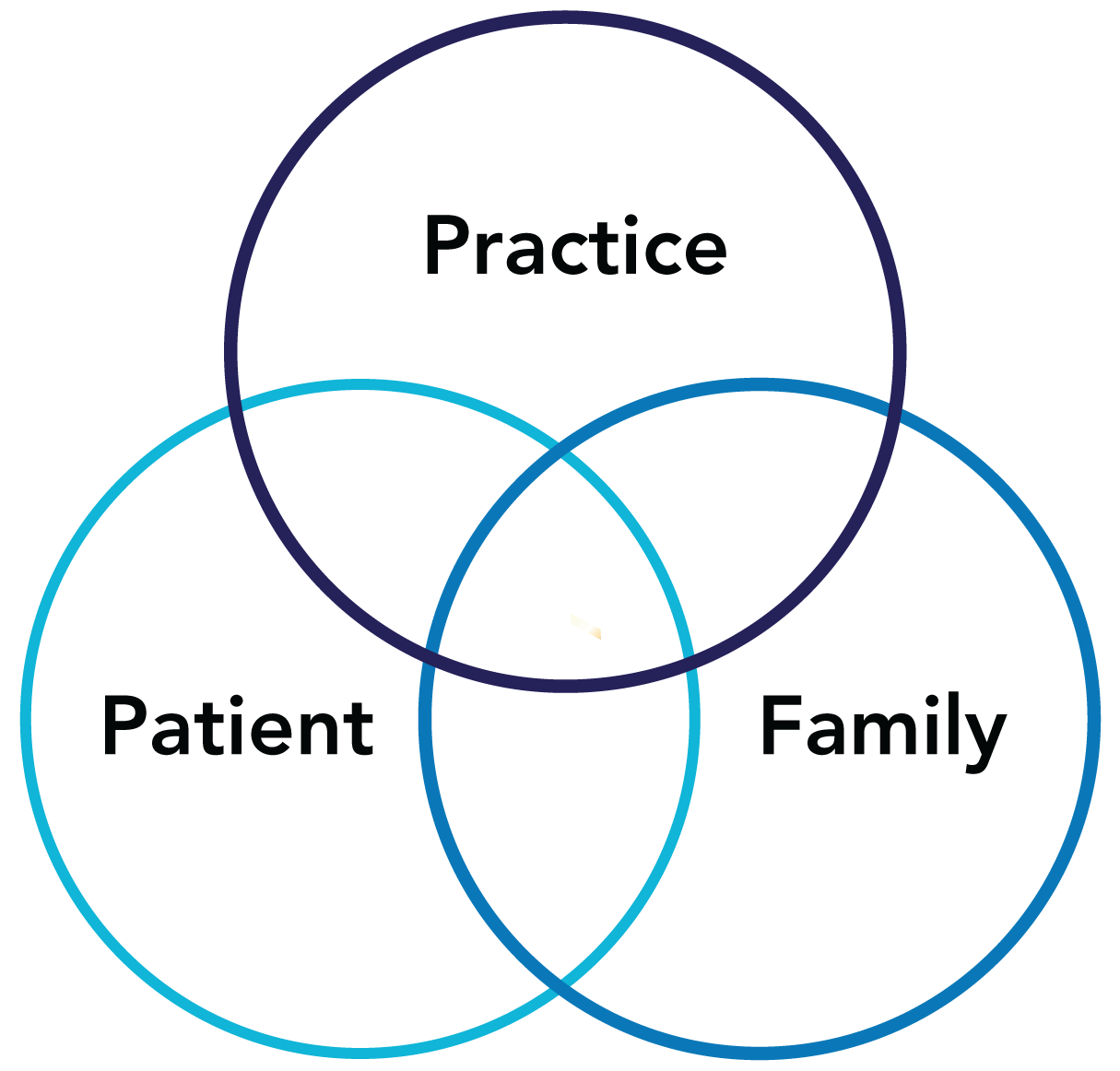
This is the patient experience model that we imagined when we created our patient engagement platform. The platform was designed to thoughtfully anticipate those points of disconnect to provide a solution that is not only able to support patients and families through moments of anxiousness and uncertainty, but can actually exceed their expectations making the end-to-end surgical experience stand out for all the right reasons.
Within CARE, patients can quickly and easily invite family members or other caregivers to have access to their details in the app. Any information that is delivered to the patient can also be shared with the caregiver, which ensures that everyone gets first-hand information without the risk of inaccuracy.
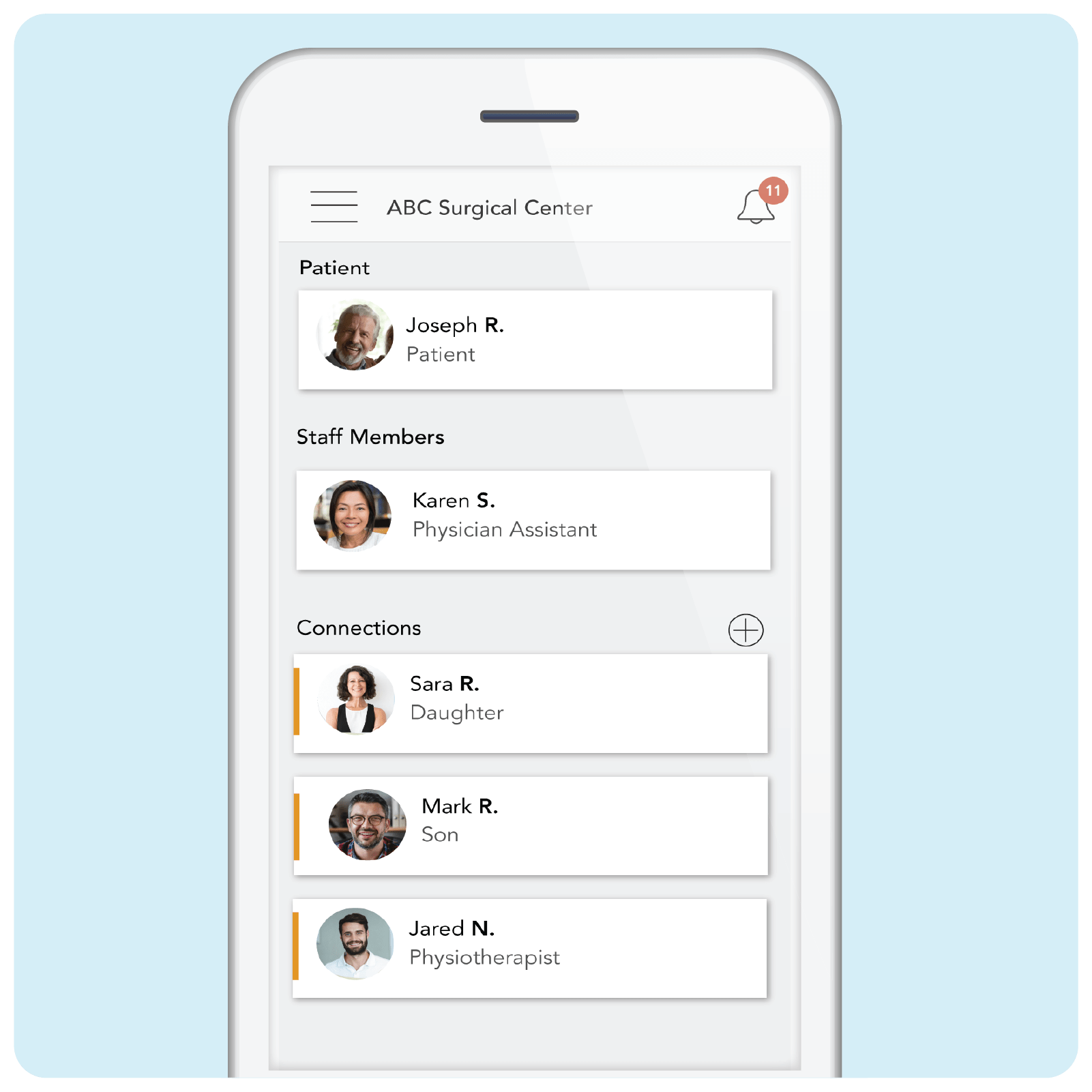
Engage families in a way that is efficient for everyone
To carry on with my surgical anecdote, the surgery did eventually happen, and all was well – that is, until we lost the little piece of paper with the aftercare instructions. Was it one eyedrop in the morning? Two at night? I called the practice to find out, but they were already closed. I pictured the little piece of paper, probably laying in the parking lot at the clinic, and stared at my blank iPhone screen again.
Imagine if my phone had displayed the aftercare instructions in that moment? That’s what we had in mind when we designed the automated delivery of helpful information for patients and families. Automation can be set relative to a procedure date so that the CARE app will nudge patients and family members to look at just the right content at just the right time. This not only alleviates stress for patients and their families, but it ensures that everyone has the right information to support the patient’s recovery and helps reduce the number of calls coming into the practice.
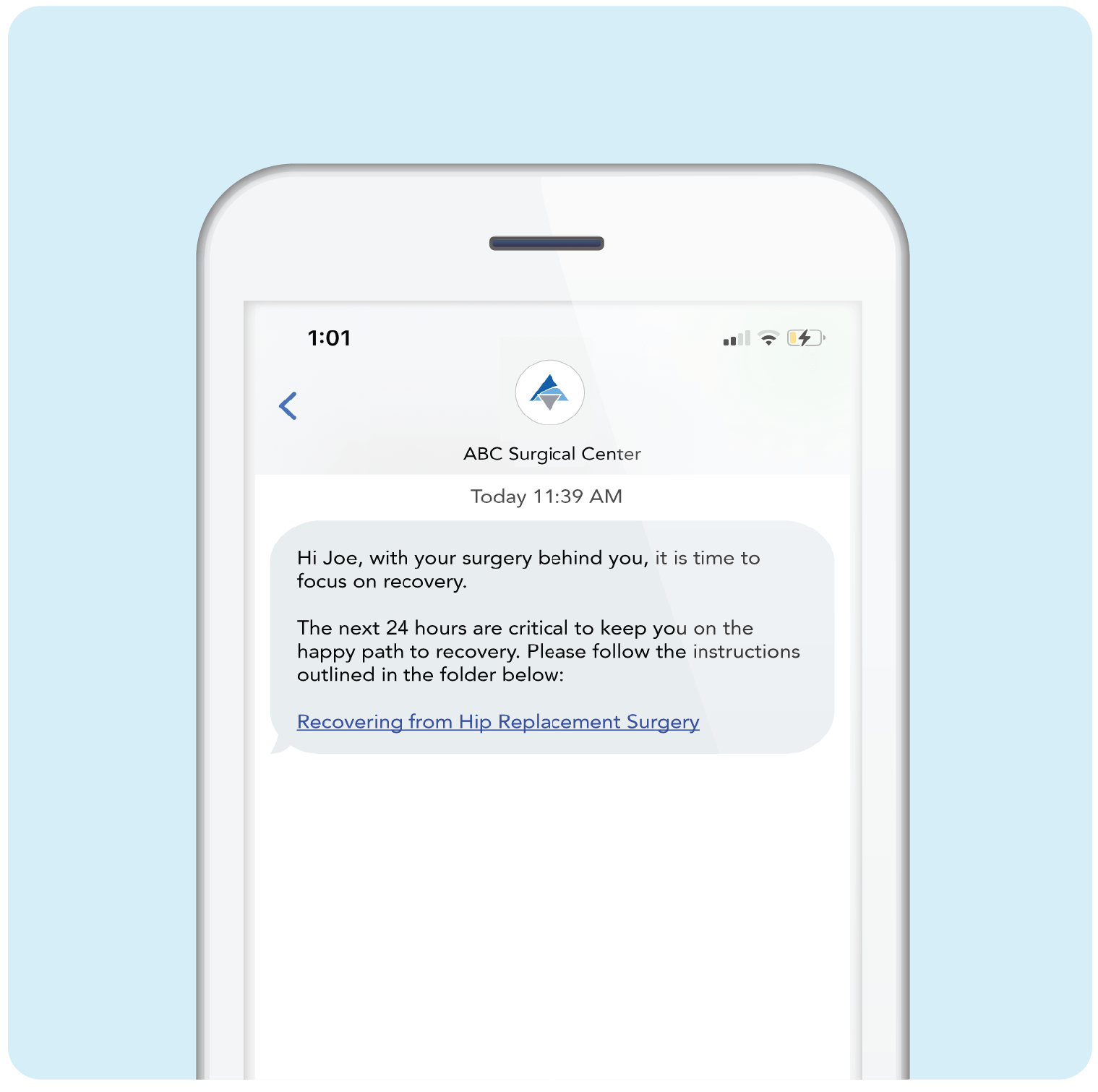
On the topic of timely content, the Posts feature in the CARE application works like a secure and private social media feed where an administrator can quickly post information to all patients and their families, such as a timely update about the clinic being closed due to inclement weather. You can also use this feed to share helpful articles, details about events hosted by your practice, or even wish your patients a happy holiday. Something this simple can make all the difference to those family members who are planning their days around medical appointments for their loved one.
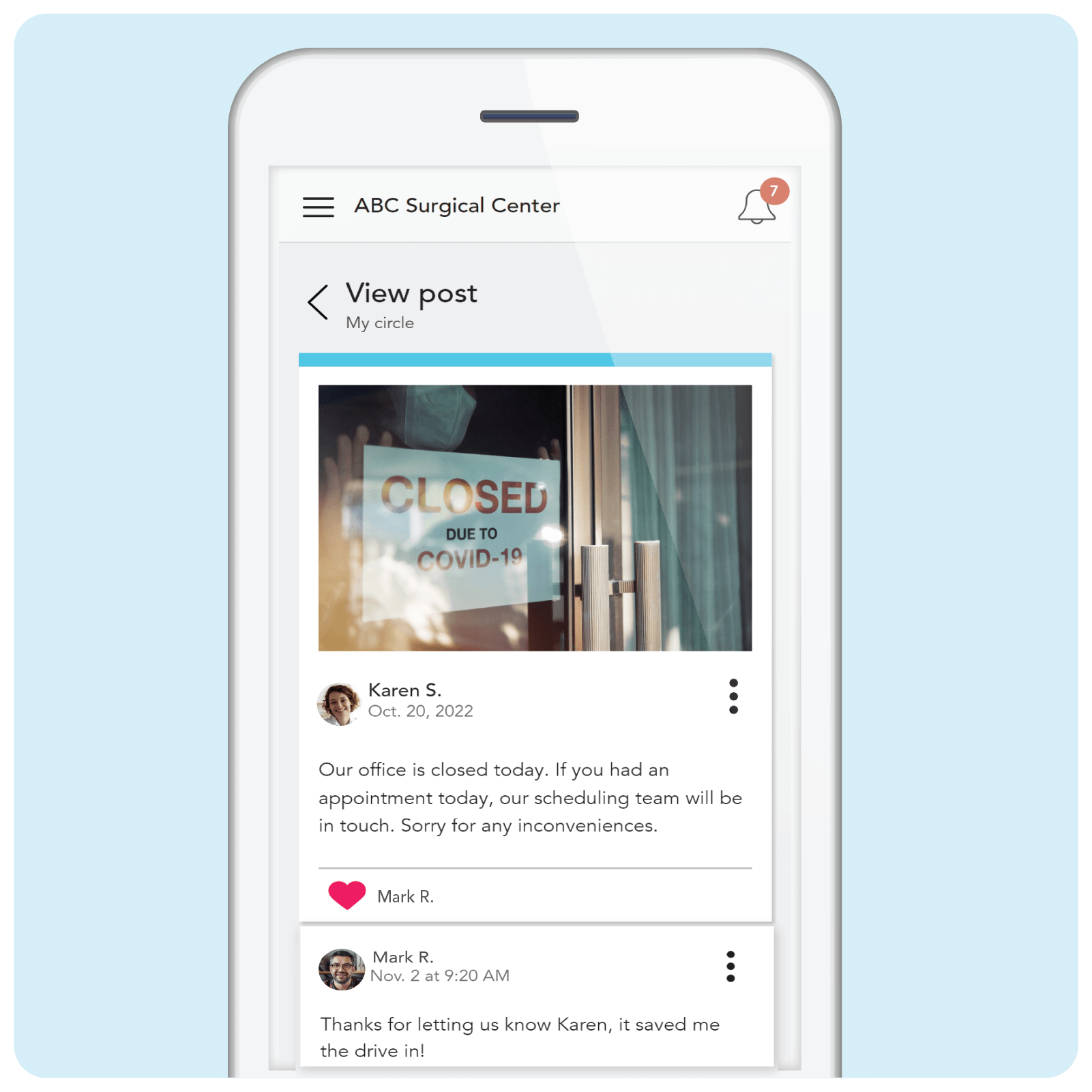
If you’re also looking for ways to really stand out, also making it easy for patients and families to efficiently engage with your team is something we are certain will drive referrals. Our app’s Chat feature with automated response-time reply options is designed to let family members know that your team is accessible, while not pressuring your team to be available 24/7. And if you’re not ready to support two-way chat just yet, you can always use the Chat feature to send one-way messages to keep patients and their families encouraged and involved, or the Video conferencing feature for those times when remote family members and patients can’t travel, but need to have critical conversations with your team!
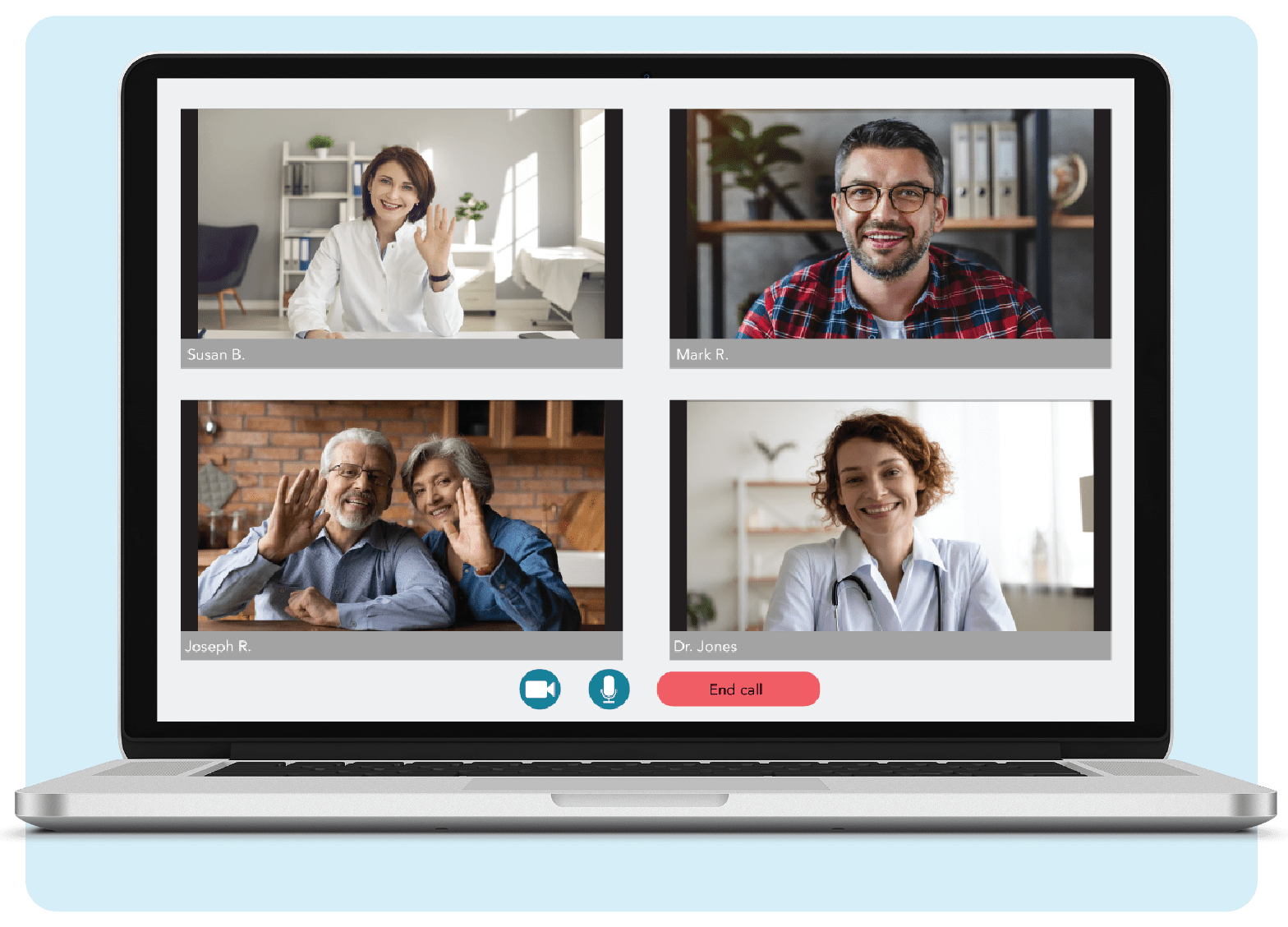
A good family experience enhances the patient experience
The Intellijoint CARE solution was built around recognizing and supporting the valuable role families play in the patient experience. When families are in the loop in an efficient way, it eliminates the gaps and stumbling blocks in the surgical journey to improve the patient experience, patient outcomes, and clinical efficiency. To learn more about Intellijoint CARE and the other features it offers to support your practice, visit: https://www.intellijointsurgical.com/care/.

Guest Blog by: Mary Pat Hinton
Mary Pat is the CEO and co-founder of Emmetros, our technology partner and creator of the platform that powers our innovative patient engagement solution, Intellijoint CARE. In 2014, she left her corporate leadership role to pursue her heart-work by launching Emmetros. Driven by a commitment to honour her late grandmother, Mary Pat set out to create technology that prioritizes the independence and dignity of the person receiving care.
References
1. Eskes AM, Schreuder AM, Vermeulen H, Nieveen van Dijkum EJM, Chaboyer W. Developing an evidence-based and theory informed intervention to involve families in patients care after surgery: A quality improvement project. Int J Nurs Sci. 2019 Sep 12;6(4):352-361. doi: 10.1016/j.ijnss.2019.09.006. PMID: 31728386; PMCID: PMC6838870.

